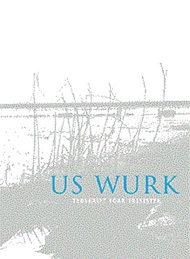Oer reade slofkes. Ier wurk fan Tsjits Peanstra op 'e nij lêzen
Abstract
In 1999 Neierhân (‘Afterwards’), the collected poetry of the Frisian poet Tsjits Peanstra, was published. Her first poetry volume Underweis (‘On the Road’) appeared in 1955. Critics have read and analyzed Tsjits Peanstra’s poems mainly within the framework of Frisian literature, and particularly as an example of the female voice within that tradition. In this article the poem ‘Reade slofkes’ (Red shoes) from Underweis serves as an example of how her work was read and analyzed. Three Frisian critics, Wadman, Knol and Steenmeijer, wrote about this poem. Although their conclusions differ, the starting point of their interpretation of its form is in all three cases the opposition between tradition and modernity. About the theme of the poem they all agree: young and happy love. However, if it comes to form and theme, a close and careful reading points into another direction; ‘Reade slofkes’ transcends the Frisian tradition with its emphasis on modernity and tradition. Its scrupulous form suggests that the theme is not young and happy love, but a love ridden with tensions. The frequent use of the colour red in combination with the adjective ‘poppy red’ opens the door to another interpretation: ambiguous love, lethal and vital at the same time. The title of the poem refers to the fairy tale ‘The Red Shoes’, which has often been used as creative material. Jungian analyst Estés reads the fairy tale as the struggle of a woman for her autonomy which ends in (symbolical) death. Poet Anne Sexton also uses the fairy tale as an inspiration; her poem ends in suicide. Peanstra refers to womanhood, creativity and suicide in several poems written in the same period as ‘Reade slofkes’. My article argues for a reinterpretation of Peanstra’s oeuvre against the background of the issue of female creativity.

